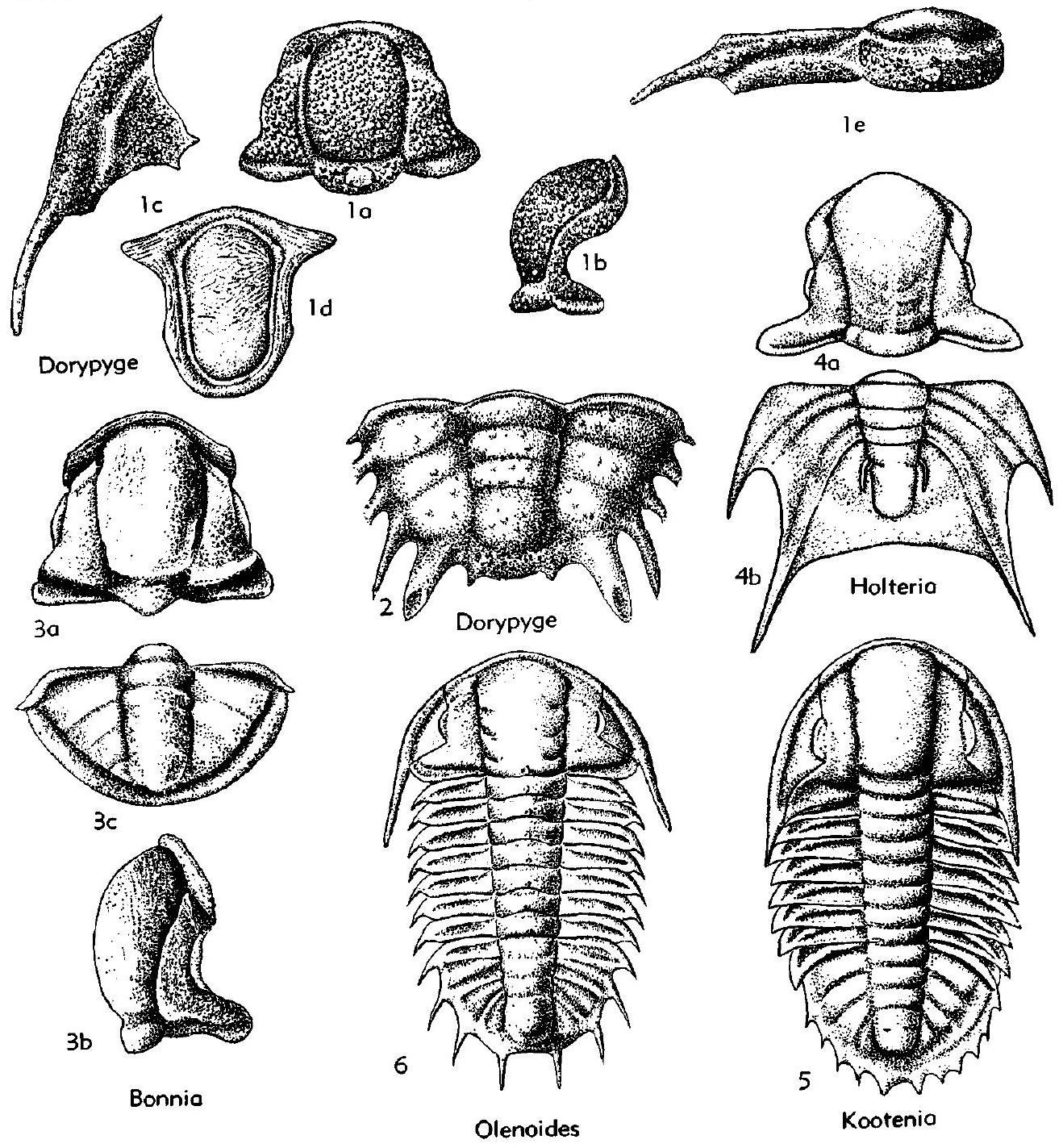Welcome to the Treatise on Invertebrate Paleontology!
Please enter a genera name to retrieve more information.

Olenoides
Classification
Phylum:
Arthropoda
Subphylum:
Trilobitomorpha
Class:
Trilobita
Order:
Corynexochida
Family:
Dorypygidae
Formal Genus Name and Reference:
Olenoides MEEK, 1877
Type Species:
Paradoxides? nevadensis MEEK, 1877
Images
(Click to enlarge in a new window)
Fig. 159, 6. O. curticei Walcott, M.Cam., Ala., exoskel. (reconstr.), x0.7 (488).
Synonyms
Neolenus
Geographic Distribution
N.Am.-S.Am.(Arg.)-Asia
Age Range
Beginning Stage in Treatise Usage:
M.Cam., ?Upper Cambrian
Beginning International Stage:
Cambrian Stage 4
Fraction Up In Beginning Stage:
40
Beginning Date:
512.3
Ending Stage in Treatise Usage:
M.Cam., ?Upper Cambrian
Ending International Stage:
Guzhangian
Fraction Up In Ending Stage:
50
Ending Date:
498.75
Description
Differs from Dorypyge in having parallel-sided to slightly clavate glabella, pygidium with 5 to 11 axial rings, distinctly marked interpleural grooves in addition to pleural furrows, and 4 to 8 pairs of marginal spines, generally of equal length, and surface covered with smaller granules
References
Museum or Author Information
Classification
Phylum:
Arthropoda
Subphylum:
Trilobitomorpha
Class:
Trilobita
Order:
Corynexochida
Family:
Dorypygidae
Formal Genus Name and Reference:
Olenoides MEEK, 1877
Type Species:
Paradoxides? nevadensis MEEK, 1877
Images
(Click to enlarge in a new window)
Fig. 159, 6. O. curticei Walcott, M.Cam., Ala., exoskel. (reconstr.), x0.7 (488).
Synonyms
Neolenus
Geographic Distribution
N.Am.-S.Am.(Arg.)-Asia
Age Range
Beginning Stage in Treatise Usage:
M.Cam., ?Upper Cambrian
Beginning International Stage:
Cambrian Stage 4
Fraction Up In Beginning Stage:
40
Beginning Date:
512.3
Ending Stage in Treatise Usage:
M.Cam., ?Upper Cambrian
Ending International Stage:
Guzhangian
Fraction Up In Ending Stage:
50
Ending Date:
498.75
Description
Differs from Dorypyge in having parallel-sided to slightly clavate glabella, pygidium with 5 to 11 axial rings, distinctly marked interpleural grooves in addition to pleural furrows, and 4 to 8 pairs of marginal spines, generally of equal length, and surface covered with smaller granules
